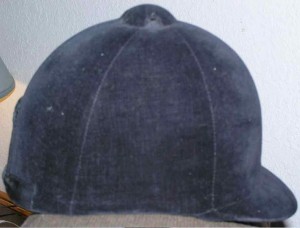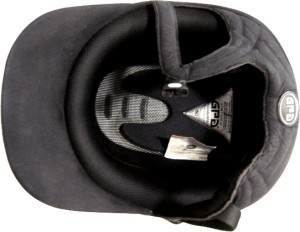Riding Helmets tend to be an afterthought for most riders, a begrudged piece of equipment that young riders love to hate and which usually gets the short end of the stick when it comes to budgeting for riding expenses.
One frequently heard question in our tack shop is “What is the best riding helmet” and my answer is always the same: The best riding helmet is the one that is the most comfortable on your head, and thus, the one you won’t mind wearing (or, won’t have to wrestle onto your child’s head every time they ride)

Personally I recommend shopping in the price range that is the most you can afford to spend on a helmet. While there is little to no evidence that expensive riding helmets like Charles Owens and GPAs protect your head from brain injuries any more effectively than entry level helmets like Troxels and DevonAire, there is often a huge difference in the comfort, stability, and appearance of cheap riding helmets vs expensive riding helmets. Let’s discuss these three areas further:
Comfort– One of the most obvious differences in expensive vs economy brands of riding helmets is the style of the helmet lining. Luxury brand riding helmets are sold by hat size, ensuring a great fit. Many cheap helmets include layers of padding or a dial-fit system. Far from adding comfort, these extra parts tend to add irritation. Instead of producing different helmets for different hat sizes, economy grade helmets are sold in S, M, LG, etc and use padding to adjust the helmet to your head. High end helmets typically have a smooth interior that is custom sized to your exact hat size, making the helmet more comfortable to wear and easier to clean.

An additional note on getting a comfortable fit- many brands manufacturer helmets to fit slightly different head shapes- for example, one model may fit a round head better while another model, even from the same brand, would be more comfortable for an oval shaped head. It’s for this reason that trying on MANY helmets can be a great advantage for a rider shopping for the right helmet to keep them safe and comfortable.
Stability- Helmet safety studies confirm that helmets that fit properly DO protect the brain during a fall better than a helmet that tilts or rests on your head in the wrong place.
Appearance – Though many people care about the brand label on their helmet and what that says about them (and frankly, when it comes to helmets and especially young riders, if the brand name is what gets the helmet on their head doing it’s job instead of left in the barn, it’s worth splurging.) you should actually be more concerned with the cut and sizing of the helmet’s shell.
Here’s the big secret about horseback riding helmet sizing: Even the luxury brands that sell helmets in 15 different hat sizes only create molds for a few shell sizes. The same shell may be used for multiple sizes of helmets- the shell is filled, lined, and padded sufficiently to fit a head of the labeled size. If the helmet in your size was created with a larger shell and padded excessively to fit your hat size, the resulting effect will be a helmet that looks disproportionate to your head- the “mushroom helmet” effect. This effect is less pronounced with luxury brands who have more shell sizes, but often very obvious with economy brands of riding helmets.
Again, the best way to deal with this issue is to try on MANY helmets. Every brand differs in what hat sizes they are actually casting shell molds of, so by trying on many helmets from different brands, you should be able to find a helmet with as little extra padding as possible, which will create a lower profile, closer fitting, and better looking helmet.
Since trying on multiple helmets is so important to finding a great fit, we often recommend horse fairs or trade shows even to customers in our shop looking for the perfect helmet. Shopping at a large horse fair or a huge horse show with many vendors, guarantees many brands will be available to try on and compare.
Tips for buying a good helmet:
1. A good helmet is investment and insurance, choose a brand at the highest end of your budget.
2. Measure your head (chart below) so you know the range you’ll need to look in.
3. Visit a very, very large tack store or a horse event with many vendors and try on as many different brands as possible.
4. When you try on helmets, if the size feels right, go ahead and adjust the harness to your neck. Does it rest in a comfortable way on your neck? Does it cover your ears?
5. With harness buckled, jump up a down, bend over, and “headbang”. Does the helmet stay put or tilt?
6. Does the helmet look excessively “mushroomed” on your head? If so, keep looking for a lower profile fit.
7. When you think you’ve found a good fit, try one more test: keep the helmet on for a few minutes (10-15 minutes, preferably) while you talk or browse the shop. If the helmet doesn’t fit the contour/shape of your skull, after a few minutes you’ll start to feel pressure on your forehead, temples, or other pressure points.
8. If your head is done growing, you’ll only have to test helmets once. Once you know the brand, model, and size that is a perfect fit for your head, you can price compare online and always know which helmet to buy when it’s time to replace your helmet.
To figure your hat size, use the chart below. Your “hat size” is the same no matter whether it’s a cowboy hat, helmet, cap, tophat, etc.
| XS | S | M | L | XL | |||||||
|---|---|---|---|---|---|---|---|---|---|---|---|
| Head size (inches) | 20 3/8 | 20 3/4 | 21 1/4 | 21 5/8 | 22 | 22 3/8 | 22 3/4 | 23 1/8 | 23 1/2 | 24 | 24 3/8 |
| Head size (cm) | 52 | 53 | 54 | 55 | 56 | 57 | 58 | 59 | 60 | 61 | 62 |
| Hat size | 6 1/2 | 6 5/8 | 6 3/4 | 6 7/8 | 7 | 7 1/8 | 7 1/4 | 7 3/8 | 7 1/2 | 7 5/8 | 7 3/4 |

Leave a Reply